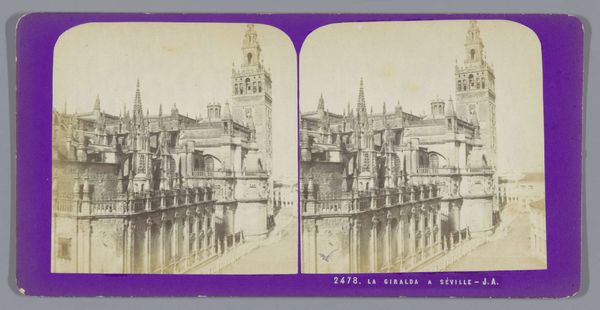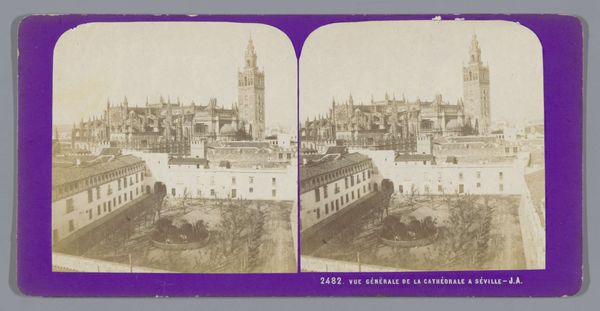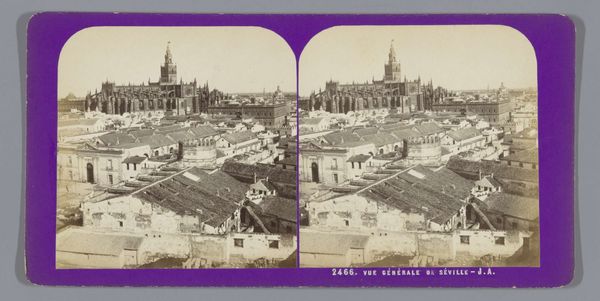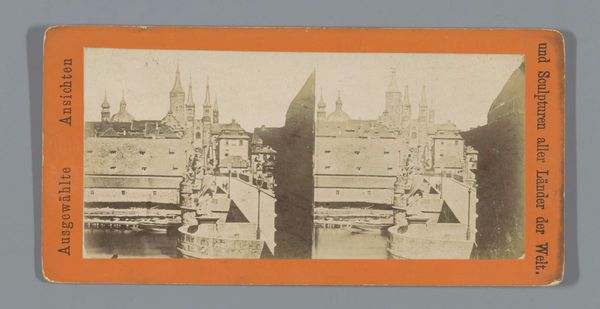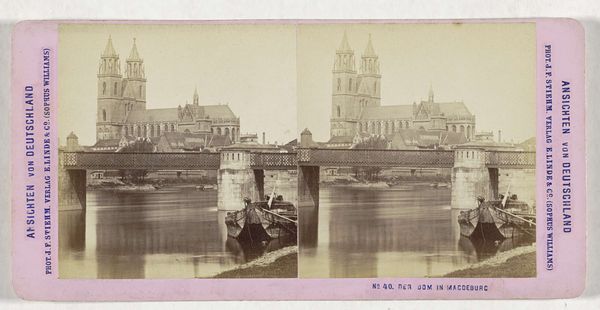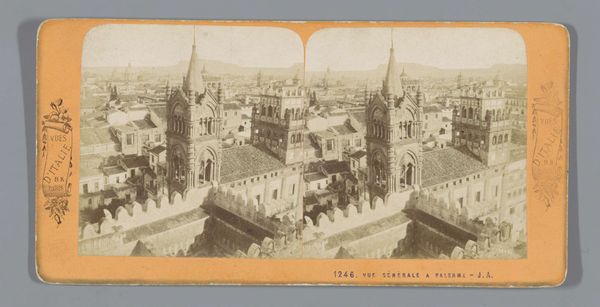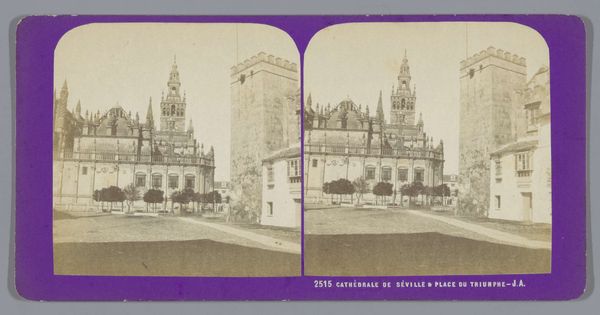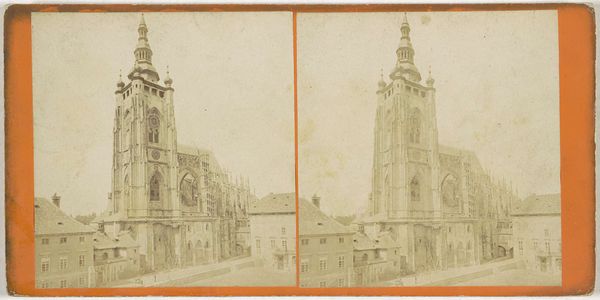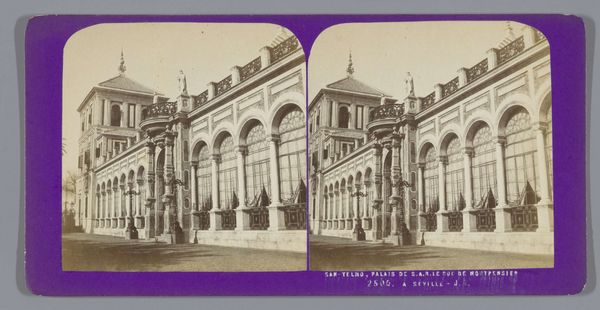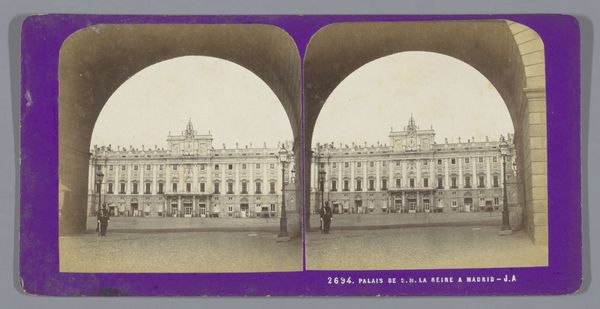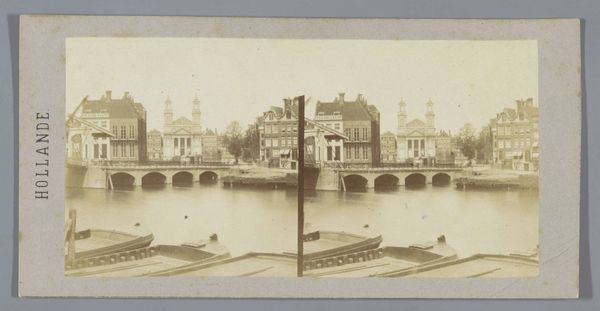
Dimensions: height 85 mm, width 170 mm
Copyright: Rijks Museum: Open Domain
This stereograph of the Giralda in Seville was created by Jean Andrieu sometime in the mid-19th century, using the wet collodion process. The image is printed on paper, then mounted on card stock – both materials made in factories. The collodion process required a glass plate to be coated, sensitized, exposed, and developed within about fifteen minutes, demanding great skill. This craft knowledge was essential to photography’s development. Though now largely supplanted, the principles of optics remain. What makes stereographs so interesting is their mass-producible nature. Two nearly identical photographs, when viewed together through a stereoscope, create a single three-dimensional image. It became a popular form of entertainment, bringing exotic places and faraway lands into people's homes. By the mid-19th century, rapid advances in manufacturing processes, combined with the growth of consumer culture, fueled the demand for photography, including the stereograph. What was once unique could now be reproduced endlessly. This piece reminds us that art and technology have always been intertwined, reflecting social change and the evolution of how we see the world.
Comments
No comments
Be the first to comment and join the conversation on the ultimate creative platform.
